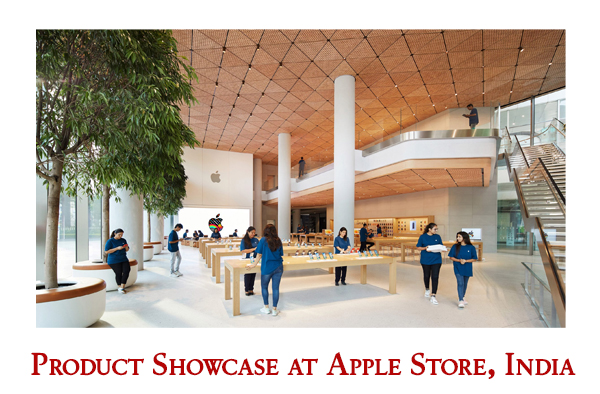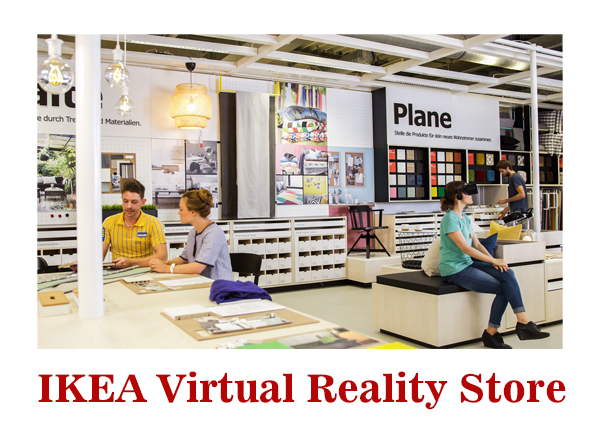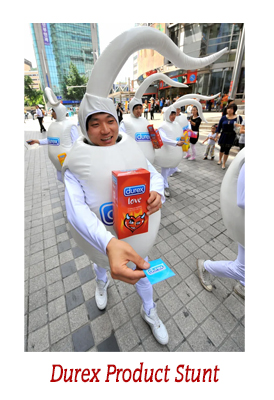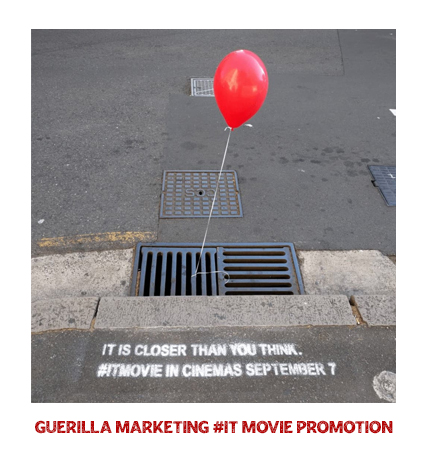Introduction
Experiential marketing, as opposed to traditional or online marketing strategies, is a particularly quick and efficient technique to increase brand exposure through making personal relationships with customers. All five senses are stimulated, evoking feelings that create enduring memories that have been found to increase brand loyalty.
Through experiential marketing, businesses may engage with consumers in a real-world, relatable way that increases brand recognition and customer loyalty. Under this type of marketing, businesses are frequently rewarded with rich customer insights that may prove to be priceless.
Experiential marketing includes the period leading up to and following an experience, event, or activation as well as the actual face-to-face event itself.
Jonah Midanik, the founder and CEO of Limelight Platform, says that live marketing focuses on interpersonal connections, whereas experiential marketing can encompass interpersonal communications via print media, radio, or other in-person experiences. Live marketing adopts a comprehensive strategy for in-person advertising, whereas experiential might be quite fragmented.
Types of Experiential Marketing
Understanding experiential marketing is extremely simple. It’s only a campaign or event where participants interact with the brand or item. This indicates that they are not merely passive recipients of promotional communications. Here, we’ll look at a few of the many distinct kinds of experiential marketing tactics.
Product Showcases
This kind of experiential marketing appears to be the most common at the time. It’s a fairly basic concept. Product showcasing allows the customer to truly experience what it can do rather than listing products and highlighting their merits through conventional techniques.
Additionally, there are a ton of virtual reality technologies available that may submerge your potential customers completely in an experience. This is fairly frequent in the automotive business.

Immersive Experiences
Any businesses can completely immerse their end consumers in the world of any brand and product thanks to the excellent virtual reality technology that is currently available. With an immersive experience, consumers can genuinely take use of all the advantages that come with a brand’s products.
Immersive experiences may include Virtual Reality (VR), Branded Escape Room, Interactive Art Installations, Multi sensory experiences etc.

Stunts or Flash Mobs
These are produced using content with a sizable audience in mind. The information must be shareable and relatable. In order to entice readers to learn more, content should include a variety of levels.

Innovation and Services from Businesses
Brands are on becoming a winner if they can develop an immersive marketing campaign that addresses a current issue. However, employing this kind of marketing is not a quick cure and won’t generate sales for a company right away. It’s a longer-term strategy that strengthens the brand and targets consumers in a much more laid-back manner. In fact, it doesn’t even appear to be a marketing plan to a casual observer.
Event Marketing
Events and experiential marketing are now intimately related and go hand in hand. Even though experiential marketing does not have to be event-focused to be effective, it is by definition a part of every event. Events are a terrific method to give customers a venue where they can engage with a business and a product in-person within a set time limit. It’s a really concrete method of product promotion.
Brand Activation
This occurs when a business introduces an innovative service or product. It is the ideal example of experience marketing. The best way to advertise any new goods or services from a brand is through a showcase.
Guerilla Marketing
Guerrilla marketing frequently contains a surprise factor and sparks a conversation regarding a company’s marketing effort. To ensure that this marketing is effective and well-received by their audience, corporations must exercise extreme caution.

How is it Different from Traditional Marketing?
Investing by corporations on experiential marketing is rising steadily. Numerous case studies, empirical investigations, statistical data, and other sources all demonstrate its resounding success over the long and short terms. Nevertheless, many companies continue to use a branding strategy that relies excessively on conventional marketing.
But how do experiential marketing and traditional marketing vary specifically? Why is it so common to compare these two marketing frameworks? We’ll be discussing that in detail, below :
- While experiential marketing stresses the creation of engaging brand experiences for the consumer, traditional marketing lays its emphasis on the functional characteristics and primary benefits of products and services. Consumers are strongly drawn to a product’s inherent qualities and the benefits. The experiential strategy, on the other hand, aims to pique and maintain consumer attention by developing authentically thrilling and emotionally impactful live brand encounters.
- Traditional marketing sees competition through the limited prism of relatively particular product/service categories, but experiential marketing sees competition by realizing that products/services fit into a larger consumer experience.
- In traditional marketing, a new feature might be added to a product, merely boosting a benefit, in order to outperform the competition. However, an experiential approach offers the following insight: in order to set a brand apart from competitors, the complete consumer experience must be taken into account.
- While experiential marketing views customers as both rational and emotional, traditional marketing views customers as exclusively rational. The conventional marketing strategy assumes that consumers’ decisions are always logical. Their choices are viewed as the outcome of solely rational steps: realizing they have a need, looking for more details, weighing their options, and then choosing to make a purchase. However, experiential marketing adds a significant emotional component to customer behavior, framing it as being motivated by whimsy, playfulness, fantasy, intense emotions, and imagination.
Benefits of Experiential Marketing
Experiential marketing has a wide range of advantages. Consider how they may provide clients with a unique way to approach and engage with their target audience, develop a better success plan, and generate loyal customer bases. The following are some advantages of experiential marketing;
Boost Brand Awareness
Increasing general brand recognition is one of any brand’s most difficult problems. When members of the general public are more aware of a brand and its presence, the likelihood that the name connected with the brand will come to mind when they’re ready to make a purchase increases significantly. In fact, increasing brand recognition through this kind of marketing event is a terrific approach to do so while giving the customer a special chance to make a purchase at that particular time.
Strengthen Customer Loyalty
Building a devoted customer base is crucial to a company’s success or failure. A brand must not only appeal to its target market in order to maintain its position in the market, but it must also foster an atmosphere conducive to sales and the development of satisfied customers who will want to return and make further purchases in the future. Loyal clients are also much more inclined to recommend a branded good or service to their friends, relatives, and coworkers. Word-of-mouth marketing is still quite powerful, and it works best when supported by a strong client base.
Improve Engagement
Experiential marketing is centered on increasing engagement. Customers are more likely to engage with a business and give it a try when you give them a fun and enjoyable experience. This strategy is the ideal way to show all the advantages of a good or service and how it can address a customer’s issue. Additionally, when executed well, the experience will enable the customer to take pleasure in the presentation or event and establish a bond with a company.
Going Viral
When a brand becomes popular on social media, a large audience of potential buyers is exposed to the business’s products. A brand’s product or service sales may soar when it becomes popular online, spurring on the entity’s healthy growth. Additionally, when consumers witness a product or service in use, they might upload films or pictures to the internet, where they will be circulated by others who take notice of and appreciate what they have to offer. Experiential marketing has the ability to give brands viral possibilities even though going viral is rarely a guarantee.
Shortcomings of Experiential Marketing
There are several challenges that marketers presently face when it comes to experiential marketing. They are as follows;
Proving ROI is Difficult
Let’s say a business recently invested in a banner advertisement at a football event. The field is lined with their name and numerous others. The banner will be up for three months, after which the firm must determine its return on investment and justify it to the company’s executives. It can be challenging in this situation to quantify the effects of such impacts on primary income sources.
Data Inconsistency Degrades Customer Experience
Another issue that experiential marketers encounter is that, even when they do gather data, it is extremely fragmented. And when customers are fed with ads about products and services that they’re not interested in, they consequently have a terrible encounter.
Execution on a Large Scale Is Expensive And Time-consuming
Full-scale live marketing campaigns are extremely costly to implement because they are disjointed and challenging to manage. especially since the majority of available solutions are custom-built and cost a lot of money and effort to develop while providing little benefit.
Case Study: Red Bull’s Live Stream Event
Red Bull is reputed to be the pioneers of content marketing. By including extreme sports, music, culture, leisure, and entertainment, the energy drink company has created its own multi-platform media empire (Red Bull Media House). From the outset (1987), they wanted to motivate people with “out of the ordinary” tales. Red Bull has established itself as a marketing powerhouse, and the outcomes have been nothing short of extraordinary.
One specific “piece of content” produced extraordinary outcomes. Austrian skydiver Felix Baumgartner, who set the world mark for the highest skydive at 128,000 feet, was featured in Red Bull’s Stratos advertising campaign. (which is roughly 24 miles above Earth). He was launched into the troposphere by Red Bull in a “communication capsule” packed with helium. With more than eight million viewers, the findings showed the highest traffic of any YouTube live stream event ever.
References



2 thoughts on “What is Experiential Marketing?”